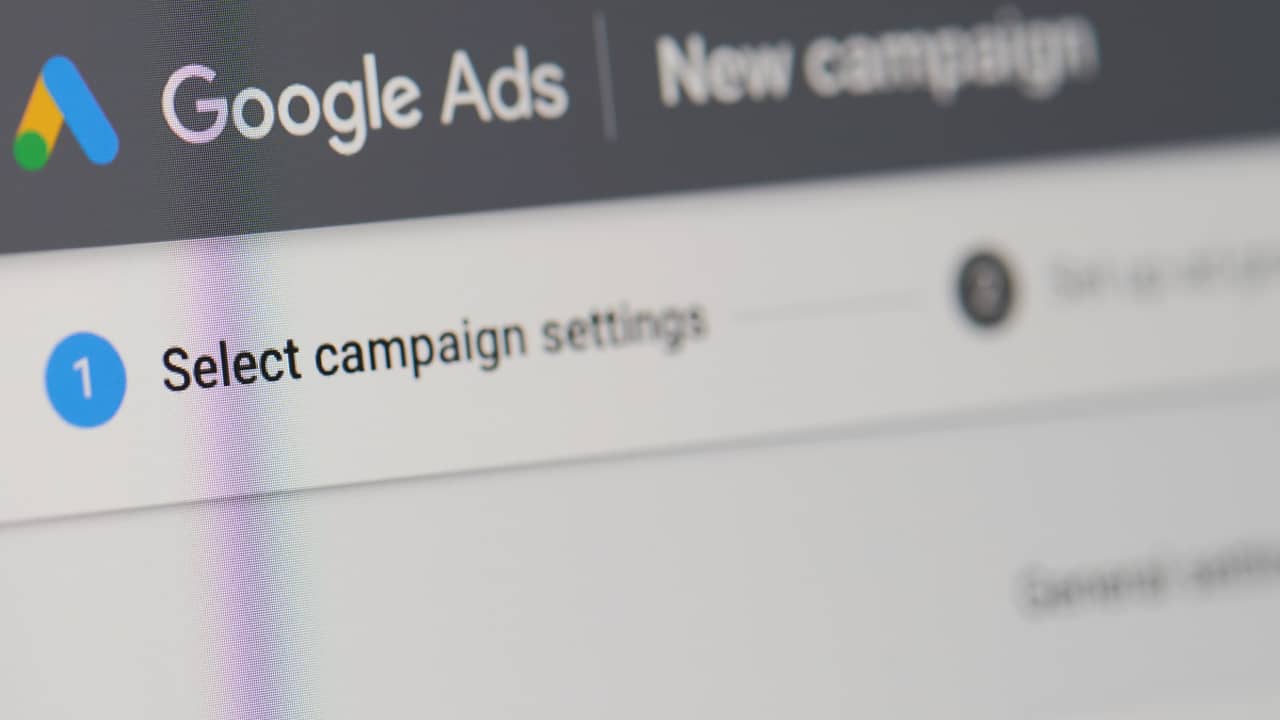Many industries have been struggling since the Covid-19 pandemic took hold of the UK in March 2020. It has been an extremely worrying and frustrating time for businesses. Nearly every single business plan and marketing strategy has gone out of the window.
Some businesses have been able to quickly pivot and adapt what they offer and how they offer it. These adaptations didn't happen by accident or coincidence. There was some smart thinking, planning, and coordinated execution behind the few business successes we've seen this year.

We believe nearly any business can adapt and thrive in these toughest of times by following a smart, digital-first marketing strategy. And we've seen this for ourselves while working with our clients.
So what's changed in 2020? Everything!
Things are very different now. There have been significant changes in our lives and how we must do business.
Communication and customer expectations
There is now a significant reliance on (effective) digital communication. The video call is king. Instant messaging on social media and online ordering through websites and apps are also now communication royalty. People have become accustomed to faster service, for example, food and drinks delivered to their door within 30-minutes of placing an order on Facebook Messenger or a newly launched online store.
Community and pulling together
There's considerable pressure on businesses to be ethical, helpful, and an active part of their community – to be less focused on profit and more focused on people. Where people are suffering job losses or other small business face closure altogether, this is especially important.
We pay attention to the businesses that have reached out to help their community. We remember the companies that went the extra mile to support employees, vulnerable customers and suppliers during the worst of the coronavirus outbreak.
Expectations have changed for businesses to be more 'community' than 'corporation'.
Physical restrictions
The biggest change and the most significant challenge is that we must maintain a physical distance from people. This is the change that typically requires the most adaptation, especially for businesses that rely on getting people through the door. Online experiences need to match that of the face-to-face service in-store and to engage with customers more through social media.
Some things haven’t changed
Some things remain the same. You still have a great product or service to offer people, and your potential customers are still out there. It’s just a matter of connecting with them.
To connect with your customers again, you need a plan to reach them. To let them know you’re ready for business. To impress them with what you have to offer.
It's time to adapt and thrive
Some of these challenges will stick with us right into 2021; and possibly into the years that follow. To connect with your customers again, you need a plan to reach them. To let them know you're ready and open for business. To impress them with what you have to offer.
We know the companies that will thrive in the post-pandemic world will be adaptable and resilient. They will have a strategy that allows them to adapt quickly to the uncertain times ahead.
So who will thrive? The businesses with:
- a strong brand that puts people ahead of profit
- a clear and friendly message, appropriate in the 'new normal'
- a digital presence that's fast, flexible, easy-to-use, and optimised to convert visitors into leads or sales
No pressure then!
We want to help your business thrive. That's why we're offering our seven-step roadmap to help you get started on the ideal strategy for your business – all for free. Let's do this!
Step #1: Understand how your market has changed

Covid-19 has affected every industry in one way or another. And it will continue to alter customer behaviour and attitudes for some time yet.
- People are valuing their time more
- People are thinking more carefully about their spending habits (especially in a recession)
- People are considering how their actions affect the environment
- People want to support their local businesses more
From how we shop and what car we buy (if we buy one at all), to where we choose to live when many of us are taking to working remotely, there hasn't been this much change since the period that followed World War II.
What has changed for your customers?
It will help to discover what has changed in the hearts and minds of your customers. How will they approach buying from you? How has their budget been affected? How effective was your communication during the crisis?
We recommend performing a Sentiment Analysis. This process allows you to identify customer feelings and opinions towards your brand, product or services by assessing online conversations and feedback.
Sentiment analysis provides interpretation and classification of emotions (positive, negative and neutral) within data gathered using text analysis techniques. It may not sound easy, but you can use online tools to make the setup and gathering of feedback straightforward.
This piece of analysis will help you to gauge people's attitudes towards your business. You can then use these valuable insights to determine how you should communicate with your customers.
Is your competition the same?
Are your competitors stronger or weaker? Depending on your market, you may have more now than before, for example, in online retail.
Looking over your competition as part of your research will identify where you are now positioned in the market and will help you create a stronger offering and more effective marketing.
Your new strategy starts here.
All of this research will help you understand what has changed and will form the basis of your new strategy. Because the plan you had pre-pandemic won't be relevant to what your audience values and expects now.
Step #2: Assess your brand
Every business has a brand. Every business is a brand. And every customer has a perception of the brands they buy from – and those they avoid.

Every business should be 'self-aware' and understand how their brand is currently performing in the eyes of its customers. The significant changes that have happened in recent months will not go unnoticed. Which companies went quiet and left staff unsupported, or which stood out and supported the NHS, local charities, or their communities?
How to perform a brand audit
Here are some of the steps we take to perform a 'brand audit' or assessment. These steps fit perfectly into our seven-step roadmap and will help you form an effective strategy.
- Look back at your mission, objectives, targets, and existing strategies for branding, digital, and marketing
- Run an online poll to understand more about the customer experience and the words they use to describe you
- Survey people outside your customer base to establish brand awareness for potential customers in your target demographic
- Survey employees anonymously to discover their understanding of your brand and get their input
- Perform user testing on your website and online systems with a group of customers or anonymous participants to test performance, usability, accessibility, and durability – we've done a handful of these recently!
- Assess your offline marketing like brochures, packaging, business stationery, and print advertisements, comparing then against your website and other digital assets
- Review your social media insights to give you access to more valuable audience data and find out who engages with your brand and what they say about you
Brand Differentiation
The bitter reality of tomorrow's business world is that competition will be fierce, and the only way you can survive and stand out is differentiate. If you know what makes your business different, and what areas need to change, you can improve it as part of your strategy – starting today!
Step #3: Perform a website health check
Examine your website analytics to gain valuable insights about your performance this year, compared to last.

Measure metrics like visitor numbers, page views, time spent around the site, bounce rates, and conversion rates. This process is different from performing user testing completed as part of Step #2, as you will be reviewing your own website.
You'll need to understand how your metrics have changed from this time last year to work out new, realistic targets for this year.
- Traffic analysis: Measure visitor numbers and locations to discover where your audience comes from
- Bounce rate: See the percentage of people who visit your site and leave (or 'bounce') immediately
- Time on page: Discover how long people spend reading each page on average
- Pageviews: Assess which product or service pages typically get the most visits (and those which may not be worth promoting)
- Page load speed: Look at the time it takes on average for each page to fully load to find out if you have any technical issues
- Conversion rate: See the proportion of visitors that performed the desired activity on your site, like completing an enquiry form or making a purchase
Gathering and assessing this data will help you answer important questions like:
- Where are the sources of my website traffic? Organic or paid searches? Referrals? Social media?
- In which country and city are my visitors usually located?
- What percentage of visitors return to my website?
- What would my metrics usually look like at this time of year and in the months ahead?
Don't stop there! Take the time to turn all this data into actionable insights, picking out the findings and what to do next. Some simple examples could be:
Insight: "Most of our visitors come via Facebook"
Action to take: Focus attention on your Facebook marketing
Insight: "The homepage has a high bounce rate and takes longer than most other pages to load"
Action to take: Optimise your homepage images and content, making sure you have clear customer journeys
Insight: "Our articles on marketing are the most popular"
Action to take: Write more articles on marketing, naturally!
Insight: "We get more visitors after 6pm"
Action to take: Use the evenings to highlight extra incentives to sign up or make a purchase
Insight: "People spend the most time reading our case studies"
Action to take: Think about how to direct visitors further into your site, and towards the all-important sales funnel!
Insight: "Our mobile visitors access fewer pages than our visitors on a laptop or desktop computer"
Action to take: Check your mobile navigation and overall quality of the user experience on smaller devices
You can use these insights to build an effective strategy. A strategy that will help address any weak points and make the most of new opportunities.
Step #4: Gather ideas and collaborate as a team using Design Sprints
Design Sprints turn business challenges into actionable insights, all in a short space of time – typically one working week.

A Design Sprint will help you to understand a problem fully, collectively generate ideas to solve that problem and then choose the most effective potential solution to test with customers without committing significant time or budget.
A 'sprint' is typically performed over five days but can be adapted to a three, two or even one-day workshop. Shorter sprints = greater intensity, and fun!
Day 1 – Understand the problem
The process begins by diving deep into fully understanding the problem. A whole day to stop everything else and think about the current situation. It's time to assess all the data you have gathered so far.
Day 2 – Idea generation
This is the fun bit! The second day is about coming up with lots of ideas to solve the problem. From the simplest to the most outlandish, everyone contributes.
Day 3 – Solutions
All ideas are then refined to a single solution, as voted for by all the participants, be it a new, innovative approach to your marketing, a new app or website feature, or something else entirely.
Day 4 – Prototyping
The fourth day focuses on creating a prototype – a simplified working concept based on the solution from the previous days. It can be paper-based or digital and should include just enough detail to test the solution.
Day 5 – Testing
Having your prototype tested with real people will generate honest feedback at a very early stage, without committing months of resources. Perfect for the current situation.
We think Design Sprints are a perfect approach to help identify opportunities and develop a 'back to business' strategy.
Check out our more in-depth Design Sprints article, Solve big business problems in five days using Design Sprints
Step #5: Refine your messaging
So much has changed in the world that your existing messaging may no longer be relevant or appropriate. While what you're selling may not have changed, the way you're selling likely has.
Refreshing and refining how you talk to your audience and existing customers about your business and products will play a key role in moving your branding and marketing forward. To have the best chance of success in the future, invest time keeping in touch with your customers.
You may have already adapted some of your communications from things like "Visit us" to "Visit our online shop", or from "Arrange a face-to-face meeting" to "Let's set up a video call".
Is this enough, though? Or is it time to consider a completely fresh new brand, website, or marketing approach? The information you have gathered earlier will help bring clarity to that decision.
Step #6: Create a marketing campaign
The most effective way to get your message out there is through a fully considered and coordinated campaign that includes marketing both online and off.

Precisely what you need will vary, but we recommend getting your message across using:
- A dedicated landing page
- A social media campaign on the platform(s) most popular with your target audience(s) to drive traffic to your landing page or to encourage people to get in touch
- A Google Ads campaign that drives traffic to your landing page for key search terms, or has people contact you directly
- Pinging out an email to your existing customers or sending out a campaign to your mailing list(s)
- Sending a direct mail piece to reach your customers differently – this has an upfront cost (design, print and post) but done right, direct mail can be surprisingly effective, and probably not something your competitors will do!
Now is the right time to get creative with your brand and explore new opportunities for your business. Your campaigns and messaging will need to work harder than ever before, as many others will be competing for the same customers, all trying to survive.
Of course, for some industries, it won't be as simple as launching a new marketing campaign. Getting back to business could mean pivoting completely to launch a whole new product or service – such as the Remote and Virtual Surveys that we piloted for Fire Surround Centres.
Step #7: Put it all together in an effective strategy
It's time to put everything together.

Take all your Post-it Notes and doodles, and write a new, comprehensive strategy that can take your business into the future with clear, realistic goals – and with a roadmap to achieve them.
Your strategy should include:
- Your objectives
- What you're going to do
- When you're going to do it (be flexible)
- Who will do it
- How much it will cost
- What you will say
- What your brand will look like
- How you will measure the results
Need a supporting hand?
We can work closely with you (well, at least 2m apart!) on any or all of the seven steps in our roadmap to help you deliver a unique, tailored strategy for your business.
We always start with listening, so that we understand the problems your facing and exactly how we can help. Reach out to us for a no-obligation chat over the phone or for a virtual coffee on a video call.
Take a little moment to get in touch and say hello!